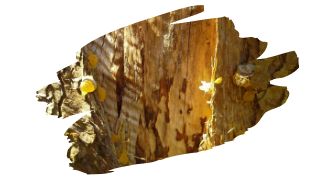You’re probably already familiar with the idea of using hardwoods as firewood. White Oak, Birch, Mulberry, and even Sugar Maple, are among some of best clean burning sources of fuel.
But, softwoods — particularly woods such as Pine and Fir — rarely get recommended for the fireplace. And for good reason (which we dive further into below).
Still, when it comes to Leylandii, is this softwood similarly unsuitable for your fireplace?
Well, in this post, you’ll discover what you need to check for, if you want to select for firewood that’s safe enough for your fireplace. You’ll also learn how much heat you can expect to get from burning Leylandii — and how it compares against hardwoods, such as Oak and Birch.
And keep reading to find out if Leylandii is truly a clean burning firewood — or whether it should be avoided…

This post may contain affiliate links to products that we receive a commission for (at no additional cost to you). Learn more here.
What Type Of Wood Burns The Cleanest?
Clean burning firewood needs to be dry, and it needs to be relatively free of any sticky tree resins. And, most importantly, it must not be sourced from a toxic tree species.
These three criteria are key if you want firewood to safely burn in your fireplace.
However, if you want firewood to produce plenty of heat as well, then that lumber needs to be fairly dense too. Dense hard timber burns for longer. And if it burns longer, it can produce more heat for your home.
So, among some of the best sources of firewood are White Oak, and Birch wood.
Related Post: Is Oak Wood A Good Choice For Fence Posts?
What About Smoke? How Do You Reduce Smoke Emissions?
Thick smoke emissions are the result of moisture evaporating and turning into steam. The steam helps to thicken up the smoke, turning it lung clogging.
So, if you want to reduce the amount of smoke, you need to only use wood that’s dry.
Drying out firewood is called ‘seasoning’. And it involves allowing freshly cut lumber to air out for around 6-12 months.
Related Post: How To Season Wood (7 Tips)
OK…And What Kind Of Wood Should Not Go Into A Fireplace?
Well, it’s worth reiterating here that you must never use firewood from a poisonous tree.
The toxic compounds found in the lumber of these tree types don’t simply disappear when you burn them. Instead, they gather in the soot, smoke and fumes. And those compounds are much too harmful to risk inhaling.
Another type of wood that should not be in your fireplace, (specifically fireplaces with a chimney), are sap-saturated timbers.
Wood types that have a lot of tree sap or pitch in them, such as Cedar and Spruce, can increase the risk of a chimney fire. That’s because that thick resinous tree sap can collect in the soot lining your chimney flue. This can cause chimney blockages, which in turn can cause a fire.
What About Leylandii? This Wood Is Safe To Burn In A Fireplace, Right?
Leylandii tree sap can sometimes cause severe skin irritation. But, you’d have to burn a lot of Leylandii lumber (all at once) for heat-vaporised sap to become a real problem for you.
But, this alone should be a good enough reason to skip over using this particular tree for firewood. Nevertheless, if that isn’t a good enough reason, then the fire hazard Leylandii poses should be.
Burning this tree in a fireplace is not a good idea. And why is that? Well, because this tree’s lumber has a lot of sap in it.
In fact, it has enough thick tree resin in it to make it unsuitable for an indoor fireplace. What’s more, that excess sap will also produce a lot of extra thick smoke (as the sap evaporates).
Still, another reason to skip over Leylandii firewood, is the fact that it doesn’t produce that much heat.
And How Much Heat Does Leylandii Produce?
When it comes to firewood, if you want to know how much heat it produces, you need to check it’s BTU.
The BTU (British Thermal Unit) rating of a wood species refers to how much energy it takes for fire to burn that wood.
The higher the BTU, then the more energy it takes. And the more energy it takes, then the longer that wood will burn.
And if wood takes a long while to burn, that means it will produce heat for a lot longer too.
Now, when it comes to Leylandii, (also known as the Leyland Cypress), this wood has a decent 21.7 BTU. And to be perfectly honest, for a fairly soft timber, that BTU level is actually not too bad. It certainly isn’t low enough to dismiss Leylandii softwood as merely kindling.
Still, Leylandii doesn’t compare to traditional hardwood firewood. For example, White Oak has a BTU of 25.7, and Birch wood has a 23.6 BTU rating.
Related Post: Is Birch Wood Any Good For Cutting Boards?
So Does This Mean I Needn’t Bother With Leylandii?
You would be wise to simply avoid using Leylandii for firewood. Between it’s sap-saturated lumber, and less than stellar BTU, you’re better off searching elsewhere for fuel.
To Wrap Up, Here Are The 3 Key Takeaways From This Post…
- 1). Good clean burning firewood should be dry, and contain little tree sap or pitch.
- 2). Leylandii timber has a fair amount of sap in it. What’s more, that sap can give some people quite severe skin irritations.
- 3). Also, burning Leylandii doesn’t produce as much heat as say, Oak or Birch wood.
References:
Wood Smoke Awareness | EPA.gov
Wood Heating | Forestry.usu.edu
Potentially harmful garden plants | RHS.org.uk



